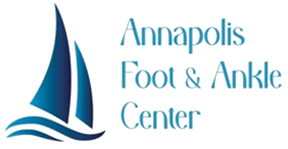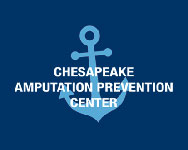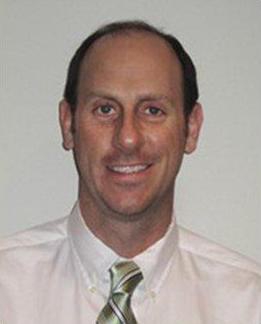.jpeg) The following are the top ten foot problems we see in our Annapolis podiatrist offices.
The following are the top ten foot problems we see in our Annapolis podiatrist offices.
10. Achilles Tendonitis
Achilles tendonitis may occur in athletes who overtrain or don't do warm-up exercises as well as in individuals who may have had a sprain or strain while working or just going for a walk. As a result of this condition, one may experience irritation and inflammation of the tendon that attaches to the back of the heel bone.
Initially, it can be treated with ice, rest, aspirin, and anti-inflammatory medication. When the pain becomes chronic, it should be professionally evaluated.
Your foot health specialist can provide treatment options that include one or a combination of treatments such as stretching programs, ultrasound and laser therapies, cortisone injections, prescription anti-inflammatories, heel lifts or orthotics, and extracorporeal shockwave therapy. An added option includes a mixture of stem cells and plasma-enriched proteins which is injected into the area.
9. Plantar Warts
Warts are one of several soft tissue conditions of the foot that can be quite painful. They are caused by a virus, which generally invades the skin through small or invisible cuts and abrasions. They can appear anywhere on the skin, but, technically, only those on the sole are properly called plantar warts. Children, especially teenagers, are often more susceptible to warts than adults; some people seem to be immune.
Most warts are harmless, even though they may be painful. They are often mistaken for corns or calluses, which are layers of dead skin that build up to protect an area that is continuously irritated. The wart, however, is a viral infection.
It is also possible for a variety of more serious lesions to appear on the foot, including melanomas. Although rare, these conditions can sometimes be misidentified as a wart. It is wise to consult a podiatrist when any suspicious growth or eruption is detected on the skin of the foot in order to ensure a correct diagnosis.
Plantar warts tend to be hard and flat with a rough surface and well-defined boundaries; warts are generally raised and fleshier when they appear on the top of the foot or on the toes. Plantar warts are often gray or brown (but the color may vary), with a center that appears as one or more pinpoints of black. It is important to note that warts can be very resistant to treatment and have a tendency to reoccur.
To prevent plantar warts, you can:
- Avoid walking barefoot, except on sandy beaches.
- Change shoes and socks daily.
- Keep feet clean and dry.
- Check children's feet periodically.
- Avoid direct contact with warts from other persons or from other parts of the body.
- Do not ignore growths or changes in your skin.
- Visit your podiatric physician as part of your annual health checkup.
8. Hammer Toes
A hammer toe is a contraction deformity, resulting in a boney prominence on top of or in between the toes of the feet. Hammer toe can be caused by improper, ill-fitting, or high heel shoes, trauma, or heredity. To prevent or manage hammer toes, you can change to shoes with lower heels, wear supportive shoes with a roomy toe box, and soak or ice your toe.
7. Flat Foot
A flat foot is a structural deformity resulting in the lowering of the arch of the foot. This is usually due to hyper-pronation. In layman's terms, we refer to this as fallen arches. A person with a flat foot or a highly arched foot that is fairly painful is in need of treatment. People with flat feet may have other foot-related problems such as ankle, knee, hip, or lower back pain. The main causes of flat feet or fallen arches are heredity, arthritis, trauma, and musculoskeletal disorders. Flat feet can be managed y wearing supportive shoes.
6. Athlete's Foot
Athlete's foot is a common infection of the skin characterized by itching, scaling, redness, and the formation of small blisters. In general, these lesions start between the toes and can extend to the borders and bottom of the foot. The fungus has the potential to spread to the toenails, causing them to become thickened, discolored, and painful. In this case, the infection is called onychomycosis. While this infection is common among athletes, keep in mind that can affect athletes and non-athletes alike.
The feet are vulnerable to infection because shoes commonly create a warm, dark, and humid environment that encourages fungal growth. Athlete's foot can also be contracted in dressing rooms, hotel and locker room showers, and swimming pool locker rooms where bare feet may come in contact with the fungus. To prevent athlete's foot, you can keep shoes and socks dry as a preventive measure.
Practice good foot hygiene including daily washing of the feet with soap and water and drying feet carefully, especially between the toes. Change shoes regularly and wear acrylic or cotton socks.
5. Fungal Nails
Nail fungus is a chronic condition with implications for patients that go beyond the nail. When left untreated, a fungal nail condition may affect physical and psychological well-being for many years. While not life-threatening, the overall effects of this infection elevate its status to that of an important medical disorder.
Fungal nail is an infection. Patients with a fungal nail condition may present nail discoloration, nail thickening, scaling, and/or detachment of the nail plate from the nail bed. Although the cosmetic aspect of a fungal nail may be a concern, the problems it causes may go much deeper.
More than 50% of patients with fungal nail experience pain and discomfort. A study on quality of life found significantly poorer ratings for general health and body pain in patients with fungal nails than in healthy subjects.


.jpeg) The following are the top ten
The following are the top ten 